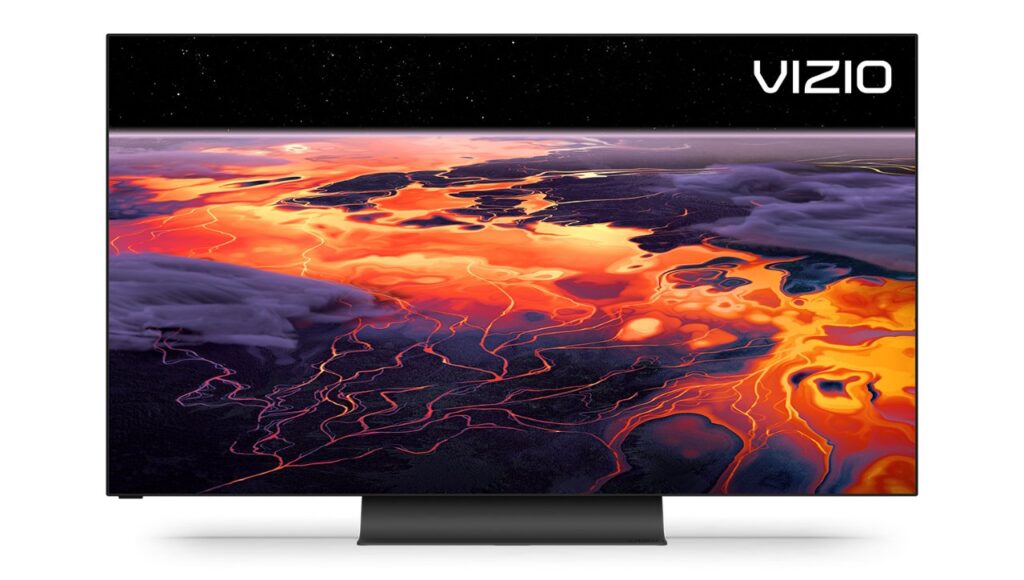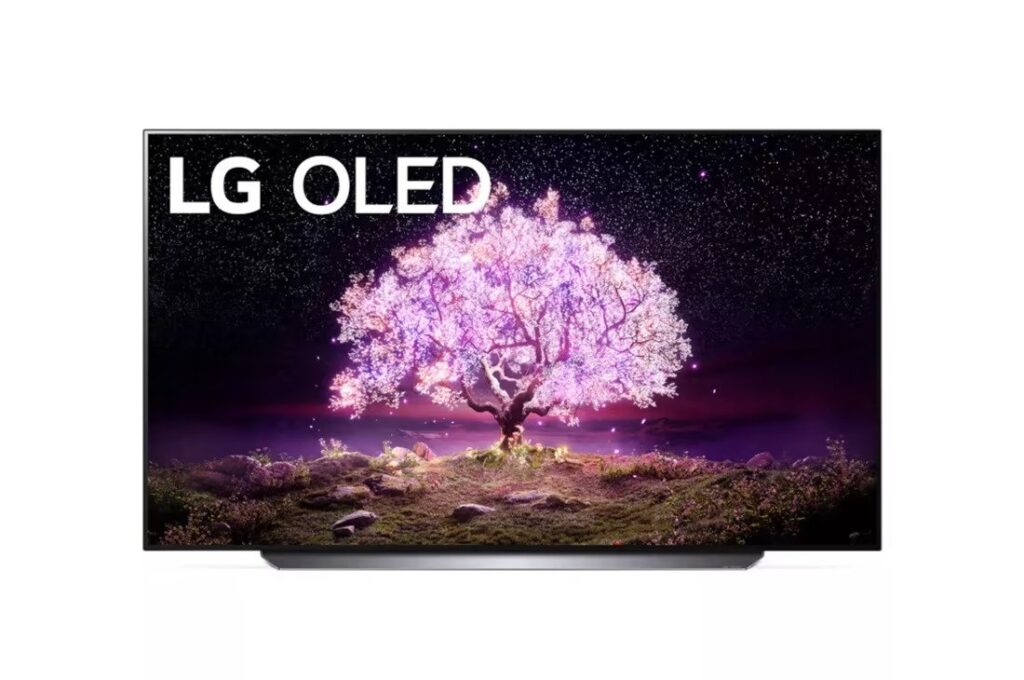If you’re in the market for the best OLED TV with outstanding performance, it’s important to note that not all OLED TVs are created equal, despite most of them utilizing the same LG display source panel. So, which one should you consider purchasing? In this article, I’ve compiled a list of six top OLED TVs for you to explore, each with its own set of detailed features. From the LG C2 to the Sony XR A95K and the Samsung S95B, let’s dive into the full list for your consideration.
Read Also: Hisense ULED Premium U7H QLED TV Review
6. Vizio H1 65″ OLED

The Vizio OLED TV, officially named the Vizio H1 OLED), presents a compelling and budget-friendly alternative to the high-end screens recently released by LG and Sony. Despite its lower price point, the Vizio OLED offers performance that is on par with most other OLED TVs and includes many of the key features found in its more expensive counterparts. It caters to individuals who are seeking a quality TV without breaking the bank. However, it’s worth noting that its brightness falls slightly below that of most other OLEDs we’ve reviewed, although it performs well in various lighting conditions, with the exception of direct sunlight.
Our review of the Vizio H1 OLED highlighted its remarkable black levels and an exceptionally slim frame. It seamlessly incorporates the advantages of OLED technology, such as outstanding contrast and wider viewing angles. What makes this TV even more appealing is its frequent price reductions, often dropping from its regular price of $1,399 to as low as $899 during sales. When compared to the cost of products like the LG C2, this represents a significant cost savings. Therefore, if you’re in the market for an OLED display on a tight budget, the Vizio H1 OLED is a genuinely compelling option.
5. LG C1 OLED

LG is a renowned leader in OLED TV manufacturing, and their C1 model strikes a perfect balance for most consumers, combining affordability with high performance for a variety of content types. The C1 excels in delivering an exceptional contrast ratio, thanks to its remarkably deep black levels, making it ideal for an immersive movie-watching experience.
One notable feature of the C1 is its filmmaker mode, which disables motion smoothing and adjusts vibrancy and brightness to replicate a cinematic picture. This mode provides a visual quality akin to what you’d enjoy in a theater. Additionally, the TV supports a wide range of HDR formats and incorporates the two prominent variable refresh rate technologies, G-Sync and FreeSync, which are particularly appreciated by gamers. In fact, the C1 caters significantly to gamers with all four HDMI ports being equipped with HDMI 2.1, ensuring seamless connectivity with gaming consoles like the PS5 and Xbox Series X, allowing for smooth 4K 120 FPS gameplay. Furthermore, it boasts an impressively quick one-millisecond response time in gaming mode, effectively minimizing any potential game-disrupting lag.
While the C1 may not be the brightest TV on the market, this is a common trade-off with OLED TVs across the board. Aside from this minor limitation, the LG C1 offers a comprehensive range of features that should meet the demands of nearly any user.
4. LG G2 OLED

The LG G2 OLED, the latest addition to LG’s premium G Series OLED TVs, has made quite an entrance and is truly impressive. Building upon the achievements of the previous G1 model, the LG G2 OLED brings improvements in nearly every aspect. Notably, in terms of screen technology, where OLED TVs have historically faced challenges with brightness, the LG G2 excels. In our testing, it achieved a peak brightness of 590.54 nits, a significant improvement over the G1’s 412.05 nits. However, it doesn’t quite match up to the Sony A80J’s 713.65 nits. But brightness is just one aspect of its remarkable performance.
The LG G2 OLED stands out in various areas, including color accuracy, color gamut, and lag time, all of which it handles exceptionally well in our tests. Naturally, it delivers the deep blacks that are characteristic of OLED technology. As part of LG’s Gallery Series TVs, it features a captivating design. The minimalist silver frame provides an almost bezel-less experience, enhancing its visual appeal. Additionally, it offers a rich array of ports, sound quality superior to most OLEDs, and a comprehensive smart TV platform that is likely to meet the needs of most households.
While it may not claim the title of being the absolute best – we are currently evaluating the LG C2, which might prove to be a more favorable choice for most individuals – the LG G2 OLED currently stands as the top-tier OLED TV available for purchase.
3. Samsung S95B

The Samsung S95P, their first venture into QD OLED TV, is a stunning piece of technology, boasting an incredibly slim profile and class-leading brightness. This TV might just be the game-changer that enthusiasts of the PS5 and Xbox Series X have eagerly awaited. By combining the hallmark OLED deep black levels with the heightened brightness and expanded color range afforded by quantum dot technology, the S95B offers an excellent choice, particularly if you frequently use your TV in a brightly lit room. Notably, all four HDMI inputs are version 2.1 and support 4K 120 FPS sources, making it perfect for high-performance gaming. Moreover, it supports VRR (Variable Refresh Rate) with compatibility for both Nvidia and AMD FreeSync.
Samsung’s dedicated GameHub interface ensures minimal input lag, measuring at an impressive 9.6 milliseconds in game mode. HDMI 3 also supports e-ARC for use with a Dolby Atmos Soundbar. The chosen smart platform is Samsung’s Tizen, offering a wide range of streaming services, including Samsung’s TV Plus IP-delivered channel service. It’s also compatible with SmartThings-connected devices. The primary attraction of the S95B is undoubtedly its QD OLED panel paired with the Neural Quantum processor. This processor employs AI-driven optimization to seamlessly handle sound and vision, eliminating the need for extensive manual adjustments.
When it comes to image quality, the S95B delivers nothing short of spectacular performance, characterized by exceptional detail and remarkable HDR capabilities. Peak HDR brightness exceeds an impressive 1400 nits. However, it’s worth noting that while it lacks Dolby Vision support, it is compatible with HLG, HDR10, and HDR10+. The S95B’s outstanding HDR brightness makes it ideal for well-lit rooms, but its high average picture level can also lead to viewer fatigue due to its bold presentation. Even in game mode, images may appear oversaturated. Nevertheless, the TV excels in delivering buttery-smooth playback of 4K 120 FPS content.
All things considered, the Samsung S95B makes an impressive debut in the realm of QD OLED TVs. Its exceptional peak brightness and color depth are standouts, even though its presentation might not have the subtlety of a cinematic experience. For certain individuals, this could very well be the best OLED TV currently available.
2. Sony XR A95k

Sony’s A95K, the eagerly awaited blend of OLED and QLED technologies, has finally arrived, aiming to capitalize on the strengths of both. OLED technology has solidified its reputation as the premium choice for TVs due to its impeccable blacks, pixel-level contrast control, wide viewing angles, slim designs, and increasingly competitive pricing. The challenge it faces is in achieving greater brightness, and while the A95K doesn’t significantly outshine the best standard OLED TVs, it does offer superior bright highlights and nuanced colors when compared to non-cutie OLED competitors, such as LG’s G2.
One potential concern with the enhanced color vibrancy of cutie OLEDs is the risk of overly exaggerated colors. However, Sony’s meticulous approach ensures that the A95K maintains a balanced and authentic presentation. The TV continues to impress with its fine detail sharpness and three-dimensionality, a consistent hallmark of Sony’s flagship OLEDs. Additionally, the A95K includes the Bravia Cam, a camera that attaches magnetically to the back of the set and peeks over the top of the screen, although its practicality remains limited.
In terms of audio quality, the A95K stands out by TV standards, thanks to its unique Acoustic Surface Audio Plus technology. This technology utilizes actuators to subtly vibrate the entire screen, producing sound that enhances the viewing experience. In summary, whether you’re watching movies and TV shows in standard dynamic range (SDR) or high dynamic range (HDR) at any resolution, the Sony A95K shines. However, for hardcore gamers, especially those using the Xbox Series X, the LG G2 might offer better compatibility with its additional HDMI 2.1 ports, Dolby Vision game mode, and HGiG setting. Nevertheless, for most users, albeit by a relatively narrow margin, the A95K sets a new gold standard.
1. LG C2 OLED

For years, LG’s OLED TVs have been the preferred choice for premium TV enthusiasts, particularly the models in the C Series, which have consistently struck a balance between performance, features, and price. However, there has been a noticeable difference in picture quality between the C Series and the brighter G Series, and this gap continues in the current year as well. The new C2 model for this year incorporates brightness booster technology from last year’s G1, but the G2 takes this technology to even higher levels of brightness.
After a thorough evaluation of both the G2 and C2 models, it’s clear that the G2 rightfully holds its place as the top-of-the-line LG OLED model. However, the C2 continues to offer the best value for most customers. The C2 is brighter than any LG OLEDs from the previous year, although it doesn’t reach the same level of brightness as the G2. This improvement in brightness, coupled with significantly better contrast and black detail, enhances the overall image, making it brighter and more dramatic. Importantly, this improvement doesn’t compromise deep black levels or color accuracy; the image retains its natural and untouched appearance. The C2 also presents a livelier and more dynamic visual experience compared to the C1. However, there is a slight issue with a rattling sound from the speaker cabinet when the set encounters very deep bass, which is unfortunate.
As expected from LG’s premium offerings, the feature set is impressively comprehensive, especially for next-gen gaming. Those with discerning tastes and a higher budget might consider upgrading to the G2 or Sony’s A95K. Nevertheless, the C2 currently stands as the champion in terms of value. We’ve evaluated the C2 in various sizes, from 42 inches to 77 inches, and each version has been exceptionally impressive, deserving of awards. This applies even to the 42-inch and 48-inch models, which slightly lag behind their larger counterparts but are still remarkable.

